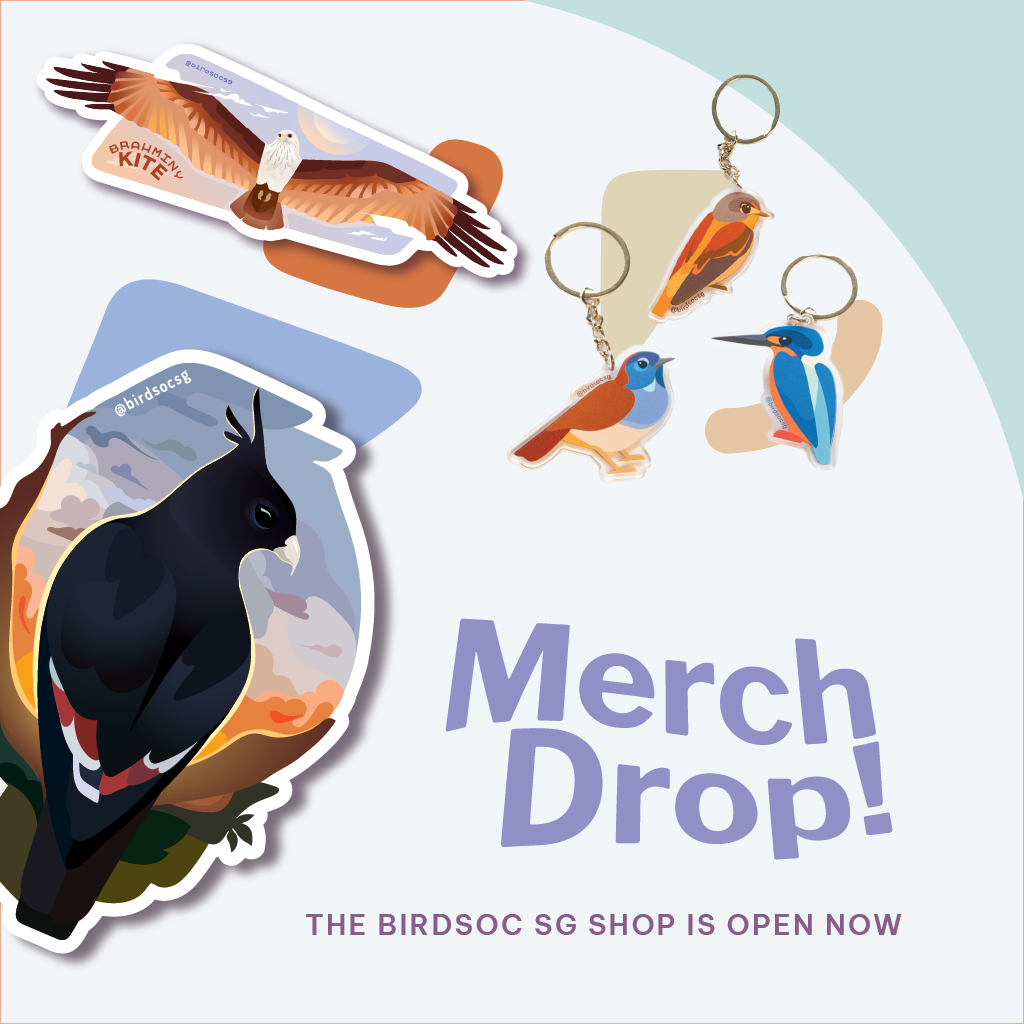Singapore island’s first confirmed breeding record of a Mangrove Whistler in at least 70 years was recently documented and published in Nature in Singapore. Rogier shares with us his experience of documenting this historically exciting event.
Article and photos by Rogier Niessen
The story started when I was a small boy and went out into nature together with my father. Back in the day we did not focus on birds alone, yet wildlife in general. These outings whetted my appetite and I picked up birding in my preteen years and stuck with it until I was about fifteen. By then other things in life seemed more important and the hobby vanished from my life.
Fast-forward 33 years to end 2022 and I am found myself in Singapore together with my family, knee-deep in a multi-year work-related foreign adventure. The job is nice yet taxing and I soon yearned for something that could reestablish a sense of balanced tranquility in my head. Being a keen outdoorsy person I picked up my lost childhood hobby and started birding in Singapore. I have not regretted it since as I found what I was looking for and made some friends in the bird community along the way.
Being intensely driven and no slouch by nature, I set myself the ‘easy’ goal of spotting every species of bird that Singapore still had to offer while here. One after another the common species were ticked and in a rather short amount of time I was left with mostly rarities to still see. Strangely enough I felt like the resident rarities to be more rewarding to see than the migrant ones. This maybe resulted from the fact that only few small populations are left on or around the island, which are even for many locals an enigma and very hard to see. Birds in this category would be, for example, White-rumped Munia, Black-headed Bulbul, White-browed Crake and Mangrove Whistler.
Looking at old bird records it seemed that the Mangrove Whistler is a resident (breeder) in small populations on some of Singapore’s offshore islands, particularly the restricted Pulau Tekong. However, on the main island it is only sparingly seen at very few locations. In fact, only two locations, being Berlayer Creek and Changi Bay Point, appeared to yield multiple records over the last few years of mostly single birds. All in all, not an easy bird to spot. This proved to be the case as seven trips in 2023 to Changi Bay Point yield many nice species, but not the desired Mangrove Whistler. Only on the eighth trip, having spent a full 6 hours in horrendously wet conditions to search for the bird, it yielded and I was able to catch a glimpse at last.
But as it goes as in the birding world a new year means you need to get all your year ticks anew. As a result, end March I ventured out to Changi Bay Point triggered by a fellow birder who spotted a single Mangrove Whistler at the very location where it was in 2023 as well. And sure enough, after only 45 minutes of searching I was able to spot and photograph the specimen as well. Assured that this bird seemed to be very loyal to this specific location I returned mid of April to chance another encounter, perhaps yielding even better photos.
This time I searched a more elaborate stretch of coastal growth/shrub and did not restrict myself too much to the original location. Luck was upon me as I spotted an adult Mangrove Whistler hunting for insects in the undergrowth. Characteristically it moved from branch to branch and appeared to be quite at ease with the fact of me taking a series of snaps at reasonably close distance. After about 10 minutes or so, having observed the bird in all its glory, something dawned upon me; The bird was not moving off and kept to a particular patch of undergrowth. Why would it do so? This was not the behavior I expected from a bird that made me dip on it 7 times in a row before.
Puzzled, I took in the scene, surroundings and habitat. The bird was hovering around the stump of an uprooted tree which was overgrown with shrub and calling ever so softly. It really was like it was calling something. Then, like being struck by lightning, I discovered the reason for the bird’s behavior; A tiny ball of feathers was sitting in the shrub in front of me, just one meter from the ground. It took ample skill to even something was there as it blended perfectly with its surroundings. But I knew immediately what it was and I was blessed to see it on the Singapore mainland. It was a Mangrove Whistler fledgling! The small ball had a comically big and wide beak like in a cartoon but was a sight to behold nonetheless. As I lined up for some close-ups the fledgling was fed by its parent which was eying me intently, making sure I did not intrude on its offspring too much. Ten more minutes passed in the blink of an eye as I intently observed what was in front of me, taking in every detail from this special scene.
Snapping back to reality, I left the fledgling and parent to their business and ventured back to the main road still ecstatic to have been part of the very special encounter which proves that Mangrove Whistlers are breeding on the main island of Singapore. To boot I spotted a third Mangrove Whistler (an adult) further down the road, bringing my haul to three for the day.
A day I will not easily forget.



